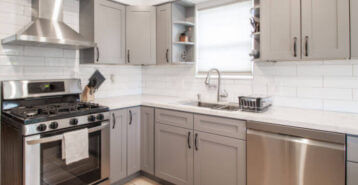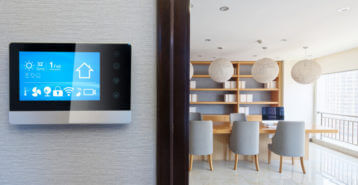Are you doing a home improvement project?
Modernize can pair you with three to four pros in your area, so you can compare options and save time and money.
Few things are more tragic for homeowners than a residential fire. House fires bring costly – and often deadly – consequences for everyone at home. According to a home structure fire report published by the National Fire Protection Agency (NFPA), a global nonprofit based in Quincy, Massachusetts, U.S. fire departments responded to more than 353,000 residential structure fires from 2014 to 2018. In addition to causing more than $7.2 billion in property damage, these fires claimed an average of 2,620 lives per year.
These statistics are sobering. Fortunately, there are many ways to reduce or prevent the chance of fire from spreading in your home. The experts at Modernize created this guide to provide new and first-time homeowners with a roadmap for increased fire safety at home to potentially prevent tragedy from striking.
5 Main Causes of Residential Fires
The National Fire Protection Agency reports five main causes of residential structure fires:
- Cooking
- Heating
- Electricity
- Intentional
- Smoking
Although fires started through cooking are the leading cause of home fires, smoking is the leading cause of fire-related deaths (23 percent), the NFPA reports. The NFPA also shares potentially hazardous materials with homeowners, so they can be more aware of things around their home that may cause fires.
4 Tips for Fire Safety at Home
Fire safety starts with fire prevention. While homeowners cannot stop cooking, heating, and using electricity altogether, there are steps they can take to improve fire safety at home. Following these pro tips can help reduce the chances of an accidental house fire breaking out and causing damage or harm in your home.
1. Cooking
Accidental fires that start during the cooking process are the leading cause of all residential building fires. Unless you are slowly simmering a dish like corned beef in a crockpot, never leave cooking foods unattended. This is especially important when grilling, frying or broiling at high heat.
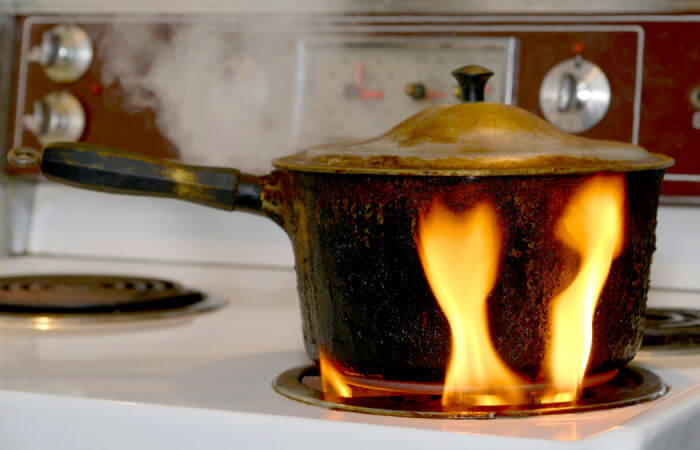
If foods begin smoking, remove them from the heat source immediately. Always turn handles inward to avoid accidental spills. Clean regularly to remove grease build-up. Cover stovetop flare-ups with a baking sheet, turn the oven off, and leave the door closed if you see flames inside.
2. Heating
There are many ways to prevent accidents from the second-leading cause of residential fires – heating. Move all flammables away from portable heaters. Only use heaters that have an auto-shutoff feature if they tip over. Routinely have your chimney cleaned if you heat with a wood stove or fireplace. Always use a screen in front of your fireplace, and put the fire out completely before going to bed.
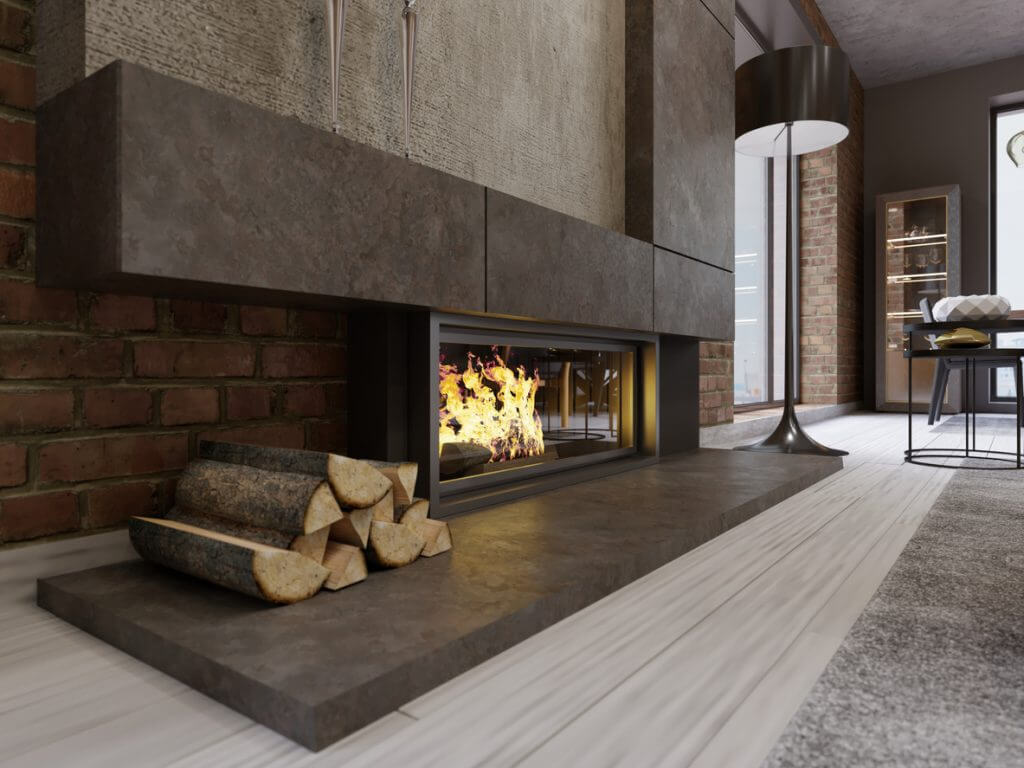
Additionally, it is important to have your heater inspected once per year to ensure it is in proper working condition. Older heating systems and furnaces can catch fire if the air filter is blocked or too dirty. Have an HVAC professional visit your home annually to check in on your heating system and point out any inefficiencies or fire hazards.
3. Electrical
Overloaded and overheated plug outlets are a primary cause of electrical-started residential fires. Never use extension cords for major appliances. Always plug them directly into a wall outlet. Only use multi-plug power strips that come with an internal shutoff safety feature.
Find the Right Contractor for Your Project
Whether you’re ready to begin your project now or need some expert advice, our network of contractors are here to help. With a few simple questions, we’ll find the best local professionals for you
4. Smoking
Smokers can increase fire safety protocols by always stepping outside to smoke, and by making sure butts are 100-percent extinguished before dropping them in the trash.
Additional Steps to In-Home Fire Safety
Following these steps can help reduce fire hazards in your home and lower the chances of a house fire starting from these common missteps. There are some other crucial fire safety and prevention methods you can employ as well.
Use smoke detectors
Common sense dictates the use of smoke detectors throughout the home. 60 percent of residential fire-related deaths mentioned above were in homes without working smoke detectors, the National Fire Protection Institute reports.
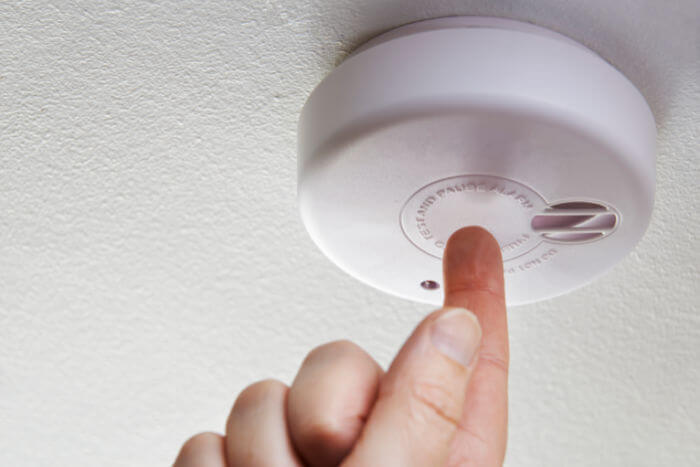
Smoke detectors provide early warning, which can be especially crucial with electrical fires that happen while you are safely tucked in bed in the early morning hours on cold winter nights. Smoke alarms should be installed in each room of your home, as well as in hallways. Keep a pack of 9-volt batteries handy to replace the smoke alarm backup battery immediately, as needed.
Create a fire escape plan
It can be nearly impossible to think clearly once panic sets in, which is a likely outcome if you are ever roused from deep sleep by a fire alarm, smoke, or flames. If you have created a fire escape plan for each member of your home, your family can hopefully jump into action rather than be left wondering what to do.
The NFPA suggests drawing a diagram of your home’s floor plan and creating two fire escape routes for every member of the family. Practice leaving the residence using those routes while assuming difficult circumstances, such as smoke-filled hallways. This is especially important for younger children whose bedrooms are located in different parts of the house. You may not be able to reach them if a serious fire event is underway.
Have each able-bodied member of the house exit the residence by crawling low while keeping their mouths covered to avoid smoke inhalation. Practice runs should include testing door handles for heat before opening them. Also use the “Stop, Drop and Roll” method of extinguishing flames in case an escape situation becomes dire.
Final Thoughts on Fire Safety at Home
Fire safety and prevention is all about minimizing risk. Smoke alarms, fire extinguishers, proper planning and common sense are tools every homeowner can use to reduce the chances of catastrophic fire breaking out in their homes. Residential fire sprinklers are another tool that can potentially extinguish a residential fire well before the fire department arrives.
Fire education, meanwhile, can help prevent home fires and provide your loved ones with a pathway to safety in case a fire does break out in your home.
Find the Right Contractor for Your Project
Whether you’re ready to begin your project now or need some expert advice, our network of contractors are here to help. With a few simple questions, we’ll find the best local professionals for you
Reviews from Real Homeowners
Welcome to Homeowner Resources! We are the Modernize blog. Modernize pairs more than 3 million homeowners a year with pre-vetted contractors in their area. This blog started because we believe homeowners should know everything about their homes, from how their HVAC works to which front door colors they might love. On Homeowner Resources, you can find information on every part of your home, right down to how you can negotiate with contractors to get the best price. Here's more about the blog.
Need a contractor? Learn more about how Modernize finds the right pro for you.

